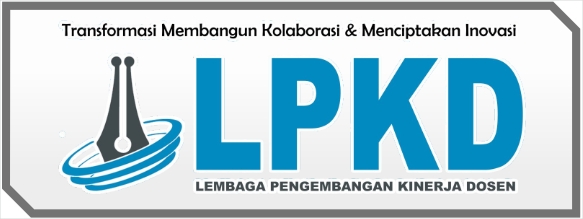Penguatan Entrepreneurial Intention Pada Mahasiswa Berdasarkan Theory Of Planned Behavior
DOI:
https://doi.org/10.59061/masip.v1i2.307Keywords:
attitude toward entrepreneurship, subjective norm, perceived behavior control, entrepreneurial intentionAbstract
This study aims to determine the effect of subjectives norms, attitudes in entrepreneurship and perceived behavioral control on entrepreneurial intention among management students in Surabaya. The research was conducted by distributing questionnaires. The responses obtained were 222 data using judgmental sampling techniques which were processed using the PLS research model. The results showed that all of the proposed research hypotheses were accepted. There is an influence of subjective norms on attitudes, perceived behavioral control and entrepreneurial intention. In this study, it was also found that attitudes and perceived behavioral control had an effect on entrepreneurial intention. In addition, this study found the mediating effect of attitude and perceived behavioral control
References
Adachi, K. (2017, April 10). 3 alasan menjadi karyawan lebih baik daripada wiraswasta. Wantedly. https://id.wantedly.com/journals/193
Agolla, J. E., Monametsi, G. L., & Phera, P. (2019). Antecedents of entrepreneurial intentions amongst business students in a tertiary institution. Asia Pacific Journal of Innovation and Entrepreneurship, 13(2), 138-152.
Ajzen, I. (1991). The theory of planned behavior. Organizational Behavior and Human Decision Processes, 50(2), 179–211.
Ajzen, I., & Fishbein, M. (2005). The Influence of Attitudes on Behavior. In D. Albarracín, B. T. Johnson, & M. P. Zanna (Eds.), The handbook of attitudes (p. 173–221)
Al-Jubari, I., Hassan, A., & Liñán, F. (2018). Entrepreneurial intention among University students in Malaysia: integrating self-determination theory and the theory of planned behavior. International Entrepreneurship and Management Journal, 15(4), 1323–1342.
Augusty, Ferdinand. (2006). Metode penelitian manajemen: pedoman penelitian untuk skripsi, tesis dan disertai ilmu manajemen. Universitas Diponegoro.
Aryaningtyas, A. T., & Palupiningtyas, D. (2017). Pengaruh pendidikan kewirausahaan
dan dukungan akademik terhadap niat kewirausahaan mahasiswa. Jurnal Ilmiah Manajemen & Bisnis, 18(2), 140–152.
Badan Pusat Statistik. (2020, December 18). Retrieved March 22, 2021, from https://www.bps.go.id/statictable/2016/04/04/1907/penduduk-berumur-15-tahun-ke-atas-menurut-provinsi-dan-jenis-kegiatan-selama-seminggu-yang-lalu-2008---2020.html
Eyel, C. ?., & Vatansever Durmaz, ?. B. (2019). Entrepreneurial intentions of Generation-Z: Compare of social sciences and natural sciences undergraduate students at Bahçe?ehir University. Procedia Computer Science, 158, 861–868. https://doi.org/10.1016/j.procs.2019.09.124
Ferreira, J. J., Raposo, M. L., & Rodrigues, R. G. (2012). A Model of entrepreneurial Intention. Journal of Small Business and Enterprise Development , 19, 424-440.
Ghozali, Imam. (2015). Aplikasi analisis multivariate dengan program ibm spss 23. Badan Penerbit Universitas Diponegoro.
Hair, J., Hult, T. G. M., Ringle, C. M., & Sarstedt, M. (2016). A primer on partial least squares structural equation modeling (PLS-SEM) (Second ed.). SAGE Publications, Inc.
Hasim, A. H. (2016). Model perilaku masyarakat pengguna kendaraan bermotor pribadi di Kota Makassar berdasarkan Theory of Planned Behavior. Universitas Muslim Indonesia.
Hisrich, D.R., Peters, M.P. and Dean, A.S. (2008) Entrepreneurship. 7th Edition, McGraw-Hill International Edition. Boston.
Indonesia Investments. (2018, April 12). Populasi Indonesia - Penduduk - Demografi & Potensi Ekonomi | Indonesia Investments. https://www.indonesia-investments.com/id/budaya/penduduk/item67
Israr, M., & Saleem, M. (2018). Entrepreneurial intentions among university students in Italy. Journal of Global Entrepreneurship Research, 8(1), 1.
Jena, R. K. (2020). Measuring the impact of business management Student’s attitude towards entrepreneurship education on entrepreneurial intention: A case study. Computers in Human Behavior, 107, 106275.
Kemenperin. (2018, November 23). Indonesia Butuh 4 Juta Wirausaha Baru untuk Menjadi Negara Maju. Kementrian Perindustrian Republik Indonesia.
Krueger, N. F., Reilly, M. D., & Carsrud, A. L. (2000). Competing models of entrepreneurial intentions. Journal of Business Venturing, 15(5–6), 411–432. https://doi.org/10.1016/s0883-9026(98)00033-0
Liñán, F., & Chen, Y. (2009). Development and Cross–Cultural application of a specific instrument to measure entrepreneurial intentions. Entrepreneurship Theory and Practice, 33(3), 593–617.
Lee, Nancy R and Philip Kotler. (2011). Social marketing :influencing behaviors for good. US. Sage Publication, Inc.
Looi, K. H., & Lattimore, C. K. (2015). Undergraduate students’ entrepreneurial intention: born or made?. International Journal of Entrepreneurship and Small Business, 26(1), 1.
Naia, A., Baptista, R., Biscaia, R., Januário, C., & Trigo, V. (2017). Entrepreneurial intentions of Sport Sciences students And Theory of Planned Behavior. Motriz: Revista de Educação Física, 23(1), 14–21.
Maes, J., Leroy, H., & Sels, L. (2014). Gender differences in entrepreneurial intentions: A TPB multi-group analysis at factor and indicator level. European Management Journal, 32(5), 784–794.
Muhammad, A. D., Aliyu, S., & Ahmed, S. (2015). Entreprenuerial Intention Among Nigerian University Students. American Journal of Business Education (AJBE), 8(4), 239–248.
Muzakkir, M., Indrijawati, A., & Syamsuddin, S. (2019). The Determinant Effect of Theory of Planned Behavior and Tax Knowledge on Taxpayer Compliance. International Journal of Innovative Science and Research Technology, 4(1), 31-41.
Rambe, F. I. (2015, June 24). Mengapa banyak yang memilih bekerja daripada jadi pengusaha halaman 1 - Kompasiana.com. KOMPASIANA. https://www.kompasiana.com/febryiqbalrambe/5517948c8133118f669de88e/mengapa-banyak-yang-memilih-bekerja-daripada-jadi-pengusaha?page=1
Reynolds, P.D., Bygrave, W.D., Autio, D. and Hay, M. (2002): Global Entrepreneurship Monitor. 2002 summary report, Ewin Marion Kauffman Foundation, Kansas City
Ruizalba Robledo, J. L., Vallespín Arán, M., Martin Sanchez, V., & Rodríguez Molina, M. N. (2015). The moderating role of gender on entrepreneurial intentions: A TPB perspective. Intangible Capital, 11(1), 106–107. https://doi.org/10.3926/ic.557
Sekaran, U., & Bougie, R. (2016). Research methods for business: a skill building approach (7th ed.). Wiley.
Solesvik, M. Z. (2013). Entrepreneurial motivations and intentions: investigating the role of education major. Education + Training, 55(3), 253–271.
Sugiyono. (2019). Metode penelitian pendidikan (pendekatan kuantitatif, kualitatif dan r&d). Penerbit CV. Alfabeta.
Sullivan, D. M., & Meek, W. R. (2012). Gender and entrepreneurship: a review and process model. Journal of Managerial Psychology, 27(5), 428–458.
Usman, B., & Yennita. (2019). Understanding the entrepreneurial intention among international students in Turkey. Journal of Global Entrepreneurship Research, 9(1), 4–6.
van Gelderen, M., Brand, M., van Praag, M., Bodewes, W., Poutsma, E., & van Gils, A. (2008). Explaining entrepreneurial intentions by means of the theory of planned behaviour. Career Development International, 13(6), 538–559.
Wahyuni, M. A., Julianto, I. P., & Dewi, N. W. Y. (2019). The examination of tax evasion behavior of tax payers from the perspective of planned behavior theory. Proceedings of the International Conference on Tourism, Economics, Accounting, Management, and Social Science (TEAMS 2018).
Y?ld?r?m, N., Çak?r, Z., & A?kun, O. B. (2016). Ready to dare? A case study on the entrepreneurial intentions of business and engineering students in turkey. Procedia - Social and Behavioral Sciences, 229, 277–288.



















